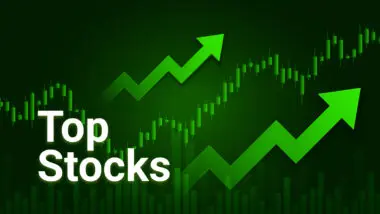Commodity
-
Exchange
-
Change
-
Category
-
Current Rate
-
Change (%)
-
Commodity
-
Exchange
-
Change
-
Category
-
Current Rate
-
Change (%)
-
Commodity
-
Exchange
-
Change
-
Category
-
Current Rate
-
Change (%)
-
Commodity
-
Exchange
-
Change
-
Category
-
Current Rate
-
Change (%)
-

Here are some of the stocks that may see significant price movement today: NBCC (India), Coforge, VA Tech Wabag, etc.
Read More








Last Updated On: 29 December, 2025 | 01:07 PM
Top Gainers
Commodity | Unit | Prev.Close | LTP (₹) | Change % |
|---|---|---|---|---|
Nickel 18 Feb 2026 | KGS | 1,415.10 | 1,471.70 | 8.99 |
Nickel 21 Jan 2026 | KGS | 1,529.70 | 1,526.00 | 3.61 |
Copper 30 Apr 2026 | KGS | 1,332.60 | 1,270.00 | 3.21 |
Menthaoil 30 Jan 2026 | KGS | 963.80 | 972.00 | 2.61 |
Copper 31 Mar 2026 | KGS | 1,315.60 | 1,246.50 | 2.53 |
Top Losers
Commodity | Unit | Prev.Close | LTP (₹) | Change % |
|---|---|---|---|---|
Cardamom 31 Dec 2025 | KGS | 2,659.00 | 2,645.00 | -0.15 |
Menthaoil 31 Dec 2025 | KGS | 916.50 | 910.50 | -0.38 |
Lead Mini 30 Jan 2026 | KGS | 184.25 | 183.50 | -0.40 |
Cardamom 28 Nov 2025 | KGS | 2,619.00 | 2,585.00 | -0.61 |
NATGASMINI 24 Feb 2026 | mmBtu | 342.00 | 335.70 | -1.66 |
Last Updated On: 29 December, 2025 | 01:08 PM
Commodity | Unit | Volume (Nos) | Value | LTP(₹) |
|---|---|---|---|---|
SilverMic Ahmedabad 27 Feb 2026 | 1 KGS | 2,32,332 | 57,17,10,15,000 | 2,38,944 |
Gold Petal 30 Jan 2026 | 1 GRMS | 1,77,237 | 2,51,23,04,000 | 14,094 |
Silver M 27 Feb 2026 | 5 KGS | 1,05,611 | 1,29,90,90,46,000 | 2,38,892 |
Gold Petal 27 Feb 2026 | 1 GRMS | 99,650 | 1,43,47,36,000 | 14,331 |
SilverMic Ahmedabad 30 Apr 2026 | 1 KGS | 84,968 | 21,30,82,68,000 | 2,43,459 |
Last Updated On: 29 December, 2025 | 12:00 AM
Category | Advances | Declines | No Change | Adv/Dec Ratio |
|---|---|---|---|---|
Bullion | 5 | 35 | 0 | 0.14 |
Energy | 0 | 14 | 2 | 0 |
Index | 0 | 2 | 0 | 0 |
Metals | 13 | 15 | 0 | 0.86 |
Others | 2 | 0 | 0 | 100 |
Last Updated On: 29 December, 2025 | 01:08 PM
Commodity | Unit | Prev Close | LTP(₹) | Change % | Volume (Nos) | Value |
|---|---|---|---|---|---|---|
Silver 5 Mar 2026 | KGS | 2,39,787 | 2,47,194 | -1.02 | 24,789 | 1,82,25,84,83,000 |
Silver M 27 Feb 2026 | KGS | 2,40,362 | 2,47,500 | -0.61 | 1,05,611 | 1,29,90,90,46,000 |
Gold 5 Feb 2026 | GRMS | 1,39,873 | 1,39,808 | -1 | 7,528 | 1,04,81,72,39,000 |
Copper 30 Jan 2026 | KGS | 1,277.95 | 1,297.85 | 1.8 | 26,030 | 87,06,71,53,000 |
SilverMic Ahmedabad 27 Feb 2026 | KGS | 2,40,428 | 2,43,000 | -0.61 | 2,32,332 | 57,17,10,15,000 |
Commodity trading refers to the buying or selling of raw materials or primary goods, like metals and agricultural commodities. Unlike financial markets, where one can trade using securities like stocks and bonds, commodity trading requires you to invest in commodity. The two most common categories of commodities are:
A mix of supply and demand, geopolitics, climate, and economic statistics regulates these.
One may trade in commodities directly by selling and buying commodities, which usually occurs in spot markets, where commodity-based selling and buying occur with immediate delivery or through futures markets, where sellers and buyers agree to trade a commodity at a predetermined price for delivery after some time. The latter is more widely used because it has the potential to manage risk and make speculative profits.
The following are the steps to invest in Indian commodity market:
Take these steps to trade in Indian commodity market:
Yes, the IIFL platform is user-friendly and supports commodity trading.
Usually, it takes a few hours to a couple of days, depending on how fast the broker verifies your details.
Most brokers don’t charge for activating the segment. You’ll only pay standard transaction fees, brokerage, and taxes during trades.
It depends on the commodity and broker. For example, gold futures may need a higher margin than farm products.
Mini contracts are available for gold, silver, and crude oil. These allow you to trade with less money.
Profits are usually treated as speculative income and taxed based on your income slab. Short-term capital gains tax may apply if trades are held for less than a year.
Yes, if you want to diversify and guard against inflation. But it’s important to study the market and manage risks well.
![]() IIFL Customer Care Number
IIFL Customer Care Number
(Gold/NCD/NBFC/Insurance/NPS)
1860-267-3000 / 7039-050-000
![]() IIFL Capital Services Support WhatsApp Number
IIFL Capital Services Support WhatsApp Number
+91 9892691696
IIFL Capital Services Limited - Stock Broker SEBI Regn. No: INZ000164132, PMS SEBI Regn. No: INP000002213,IA SEBI Regn. No: INA000000623, SEBI RA Regn. No: INH000000248, DP SEBI Reg. No. IN-DP-185-2016, BSE Enlistment Number (RA): 5016
ARN NO : 47791 (AMFI Registered Mutual Fund Distributor), PFRDA Reg. No. PoP 20092018

This Certificate Demonstrates That IIFL As An Organization Has Defined And Put In Place Best-Practice Information Security Processes.